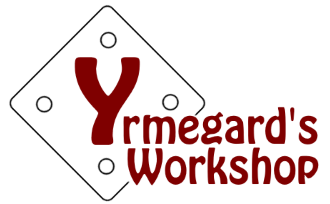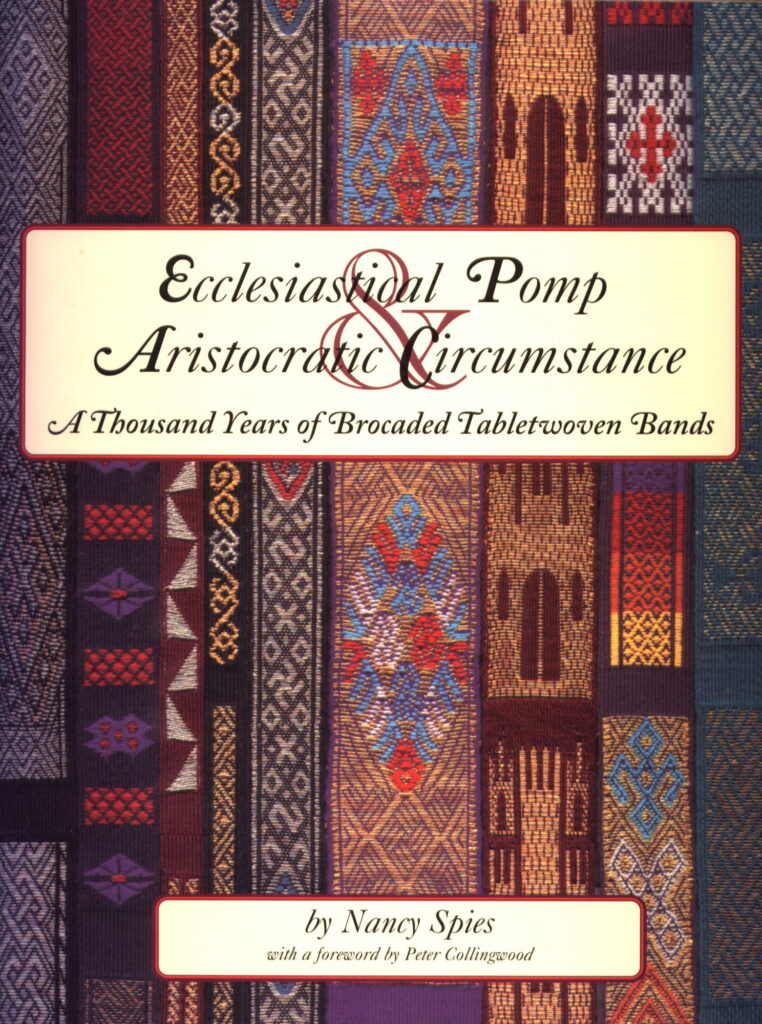Arelate Studio, 2000
ISBN 0-615-11681-7
To research a historical period of 1000 years is not an easy task, even limiting the scope to one specific type of textile art. Nancy Spies devoted five years of her life to researching the history of brocaded tablet weaving. Five years filled with gathering information, vast correspondence, frequent trips, drawings, diagrams, creating samples… The book produced as a result was described by Peter Collingwood in his preface as formidable and astonishing.
Nancy’s main occupation didn’t have anything to do with textile but, in her own words, textile art became an integral part of her life, and as opportunity presented itself, she used it to devote all her time to her favorite topic. Love for textile art and interest in history became the starting point for research, which until then no one had dared to delve into.
On a side note, the situation with tablet weaving research is similar all around – there’s a relative abundance of general information, but almost no systematic approach to it, not to mention a conclusive database for at least one technique or one geographical region. Nancy’s book, published in 2000 by Arelate Studio, filled a part of that void.
Unlike Peter Collingwood’s book, which is more of an encyclopedia, Nancy’s book can be read through as a research paper. Or, to be precise, the research paper and research conclusions form the first part of the book. The second part of the book will be described later, but the table of contents of the book (in pdf) speaks for itself.
The book starts with historical background describing where, who and under what circumstances manufactured tablet woven bands, also who used them and how. All sections are illustrated with drawings of museum exhibits, excerpts from literary sources and research papers. Regarding literary sources, particular attention is paid to the terminology, and how the author decided which of the sources mentioned brocaded bands, and which were talking about something completely different.
The historical background is followed by technical information on the bands that Nancy’s research included. A detailed breakdown is given of what type of thread was used as the warp, which dyes were used for the warp (separate sections per material and per time period), what different types of metallic weft were used, how those were manufactured and when each of type was mostly used. Moreover, metallic wefts were tested to learn their metal composition. A separate subsection is devoted to types of weaving used for the main band under the brocade, and a separate subsection shows types of weft turning between rows, all this with loads of examples, drawings, and reasons behind each type. There are also chapters on patterns’ typology and weaving devices.
The only negative thing that can be brought out regarding the first part of the book is the fact that all artifacts and historical images are presented in form of sketches rather that photos of the originals, probably due to high cost of publishing the photos. Sadly, some illustrations give only a very general idea of the subject. That, however, does not spoil the overall impression of the book.
The second part of the book begins with an easy explanation of tablet weaving technique, including description of most common issues and how to solve them. 71 (!) patterns drawings follow, with full details of the original piece. For some patterns, the author has provided the photos of the samples she has woven herself, some of the samples are also used for the cover image, however, it is noted that these samples do not always exactly match the original bands in colors and sizes.
The collection of patterns is by far not the last section of the book. About one third of the entire volume (which is over 300 pages) is taken up by the catalogue of known brocaded bands dated between the 6th and 16th centuries. There are two versions of the catalogue: bands are sorted by type of use in the first part, and by the current location (country, city, museum) in the second. Information on each band includes the dates and often technical data – materials, size, technique. The catalogue is illustrated with drawings of some patterns that are not included in the pattern section. The drawings are small but still can be used as pattern diagrams if desired.
Needless to say, the bibliography at the end of the book is put together with same thoroughness, and includes detailed information about each source.
As I look through the book again and again, I feel like 5 years is a very short period of time. Again, like in Collingwood’s book, the amount of information is astonishing. But in case of Peter Collingwood textile art was his main occupation. Nancy Spies was (and is) working on the topic in addition to her main occupation, and therefore the result of her research looks even more incredible. One word to describe this book would be “inspiring”.
As a final note, Nancy has published several more books with patterns for both weaving and embroidery – they can be found here.

